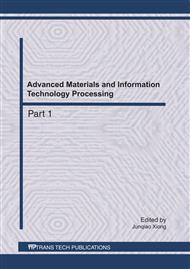p.92
p.98
p.102
p.108
p.114
p.118
p.125
p.131
p.137
Rescue Robot Navigation Parallel Algorithm in Grid Computing Environment
Abstract:
In a disaster field, to obtain the optimal path in unknown environment,a rescue robot needs to build an environment map. Sensors mounted on the robots cooperate to monitor the environment, the information of the disaster field is collected by the sonsors of different robots, all signal from sensors (mounted on all robots and signal form GPS) are sent to the bakeside parllel processors with wireless network. A grid computing environment serves as the backside parallel processors with Globus Toolkit, the grid computing processor process all the signals and construct the global map to help robot for navigation path planning.The rescue robot get control signal from the grid computing processor with wireless network,thus, the robot is not necessary to be sophisticated. New computing methods are given for parallel algorithm on grid environment.The experiments show that the method is more practical and helps the path planning problem to be solved more efficiently, the advantages of large seale computing on grid are shown.
Info:
Periodical:
Pages:
114-117
Citation:
Online since:
July 2011
Authors:
Price:
Сopyright:
© 2011 Trans Tech Publications Ltd. All Rights Reserved
Share:
Citation:


